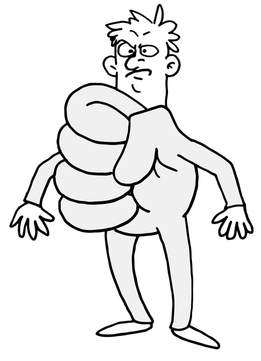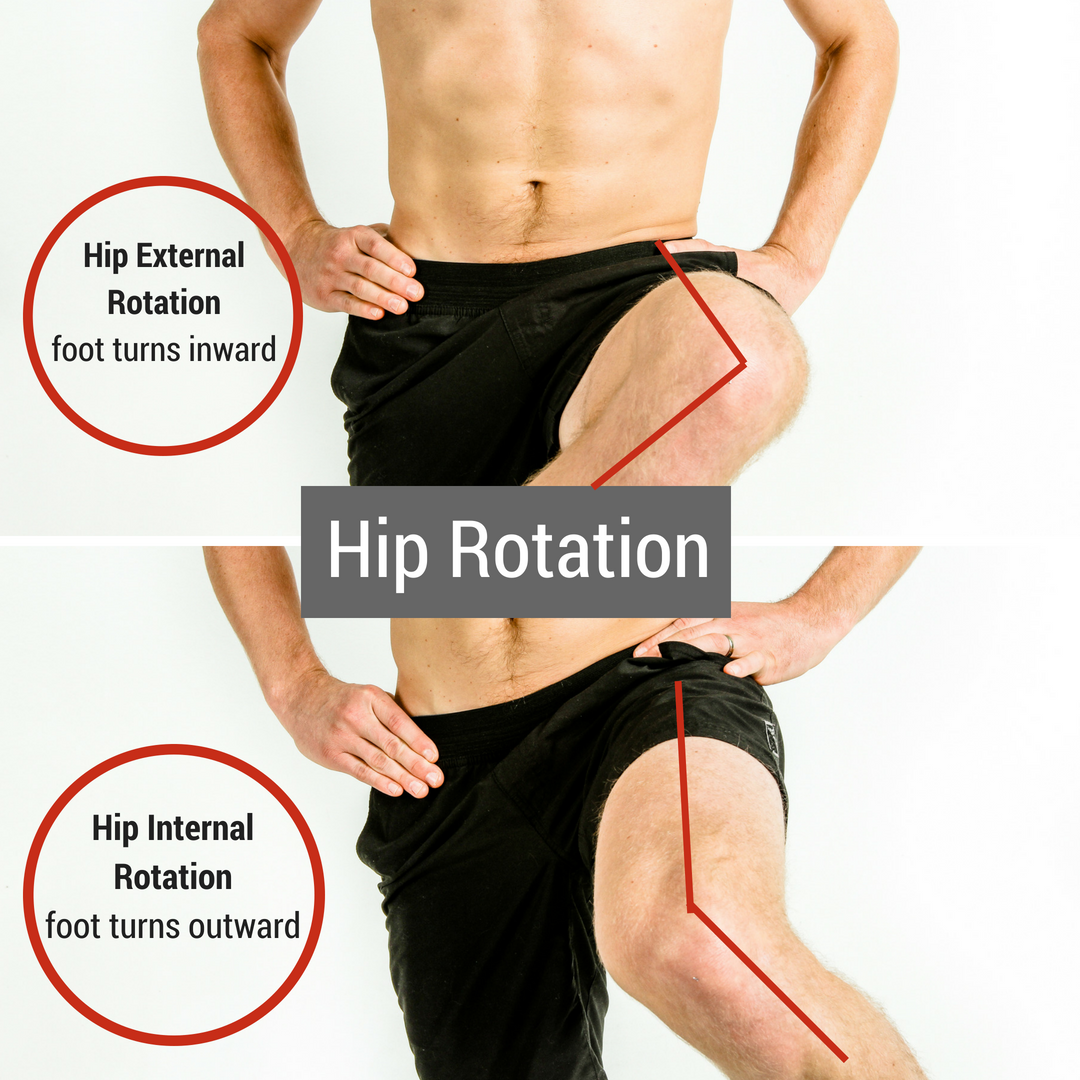Hip Overview
- The hip joint is a ball and socket joint with range of motion in three different planes.
- The hip often becomes stiff and tight due to a lack of movement throughout each day.
- Hip osteoarthritis (a.k.a arthritis) is a common hip diagnosis in the aging population. While genetic factors may play a role, weak hip muscles, decreased range of motion, and a general lack of movement are commonly found in those with hip arthritis.
Continue reading about the hip and causes of pain in this region by scrolling down on this page!
About Hip Pain

The hip joint is made of the head of the thigh bone (femur) and the round surface of the pelvis (acetabulum). Since the hip is a ball and socket joint, it has large amounts of available range of motion. This range of motion is essential for walking, climbing stairs, and squatting with proper form. Ligaments, muscles, and a thick layer of cartilage surround the joint to maintain strength and stability. If the hip joint is injured OR a person gradually becomes inactive, the range of motion will be limited.
The human body is at the mercy of the nervous system, and the main focus of the nervous system is protection and survival. The hip joint and surrounding muscles contain tons of small receptors that communicate with the nervous system. These receptors are a key component of muscle memory. When the hip loses rotation (or any range of motion), the small receptors become less sensitive and communicate less with the brain. This leads to less awareness and perception of the hip joint and decreased ability to target specific muscles. In some cases, certain muscles reduce their ability to contract at full capacity, leading to a feeling of weakness. In other cases, muscles will change their resting level of activity, leading to protective guarding and a feeling of tightness.
To illustrate this, let your hand fall into its resting position. Move your hand in circles for 30 seconds. Feel how smooth, fluid and effortless this movement is. Next, clench your fist as hard as you can and move it in circles the same as before. Notice how difficult this movement is, and how tired and perhaps painful this movement made your hand and wrist. Now imagine this same sensation you created in your wrist in your hip or low back. In these cases, your muscles can often subconsciously hold your spine tightly and rigidly. This rigidity is compounded if you’re fearful of the movement. In these moments, it is important to take a step back, breathe, and bring mindfulness to the injured body region. Trust the strength of your body and retake control over your protective guarding.
The human body is at the mercy of the nervous system, and the main focus of the nervous system is protection and survival. The hip joint and surrounding muscles contain tons of small receptors that communicate with the nervous system. These receptors are a key component of muscle memory. When the hip loses rotation (or any range of motion), the small receptors become less sensitive and communicate less with the brain. This leads to less awareness and perception of the hip joint and decreased ability to target specific muscles. In some cases, certain muscles reduce their ability to contract at full capacity, leading to a feeling of weakness. In other cases, muscles will change their resting level of activity, leading to protective guarding and a feeling of tightness.
To illustrate this, let your hand fall into its resting position. Move your hand in circles for 30 seconds. Feel how smooth, fluid and effortless this movement is. Next, clench your fist as hard as you can and move it in circles the same as before. Notice how difficult this movement is, and how tired and perhaps painful this movement made your hand and wrist. Now imagine this same sensation you created in your wrist in your hip or low back. In these cases, your muscles can often subconsciously hold your spine tightly and rigidly. This rigidity is compounded if you’re fearful of the movement. In these moments, it is important to take a step back, breathe, and bring mindfulness to the injured body region. Trust the strength of your body and retake control over your protective guarding.
Who Commonly Needs Hip Mobility?
People who sit for long periods of time
Reason: the hip is designed for motion. Prolonged sitting decreases the opportunity for movement Older Men Clinically, males more commonly have more tightness and stiffness in their hip joints (personal finding from Heafner Health) Runners Due to the repetitive nature of running, the hips and ankles are prone to stiffness. Maintaining joint mobility is key for injury prevention. What Can You Do to Prevent Hip Pain? Perform regular hip mobility exercises
Improve the pain free range of motion of the low back Perform exercises that strengthen the hips and spine (ex. squats) |
